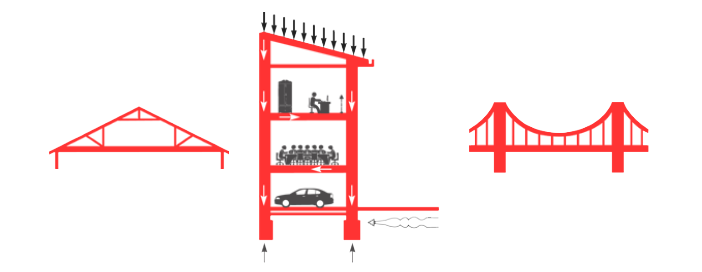Building Desing
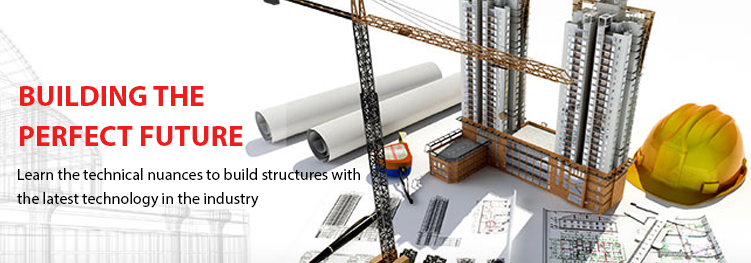
OVERVIEW
Building Design is about applying architectural, engineering and technology developments to the design of buildings. This discipline is largely concerned with the residential design, both single and multi-family, agricultural buildings, and decorative facades for larger buildings, and commercial structures.
The practitioners of building design are mostly architects and structural engineers. As part of planning, designing, and construction of buildings, they create initial and schematic designs of interior and exterior layouts, complete working drawings and specifications that will comply with all applicable building codes and regulations, select materials to be used, identify contractors and oversee construction by conducting on-site inspections.
Working closely with clients, the building designers resolve the formers' requirements into a set of instructions for the construction a building.
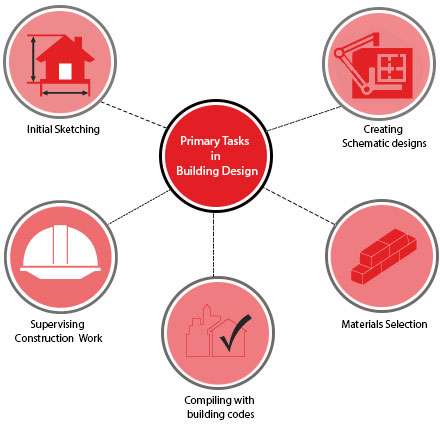
Employment
Building designers are hired by construction companies. Many run design services agencies, thus practice as self-employed building designers.
The Role of CAD
Building Design CAD tools make home design, remodeling, interior design, and kitchen & bath design easy. Using CAD is a simple way to design, estimate and manage building projects. When combined with Building Information Modeling (BIM) features, CAD tools help designers visualize, simulate, and analyze their designs. Importantly, with CAD, it becomes easy to identify design flaws and pinpoint serious build problems.
Course Syllabus
-
Revit Architecture
Overview :
Autodesk’s Revit Architecture is a Building Information Modeling software tool for architects, structural engineers, engineers, and contractors. It allows users to design a building and its components in 3D, annotate the model with 2D drafting elements and access building information from the building models database.
Revit comes with tools to plan and track various stages in the building's lifecycle, from concept to construction and later demolition.Why should you learn?
Revit software delivers tools that support architectural design, MEP engineering, structural engineering, and construction. Revit is specifically built for BIM to help you design, build, and maintain higher-quality, more energy-efficient buildings. Comprehensive features make it an ideal solution for the entire building project team.
By learning Revit, you as a design and construction professional, will be able to bring ideas from concept to construction with a coordinated and consistent model-based approach.Learning Objectives :
CADD Centre provides a wide range of courses to help you master Revit Architecture that has some of the following core capabilities:
- Analysis: Building element energy analysis; Enhanced structural analytical model; Duct and pipe calculations to API; Physical materials for performance analysis
- Collaboration: Work-sharing – multiple users save their work to a central file; collaboration on shared models across a WAN; work from remote locations using a local server.
- Design: More easily model, edit, and document designs of stairs and railings; parametric components - graphical system for design, form making; HVAC/electrical design room color-fill plans and communication of design intent, visually.
- Visualization for creating displaced building design views; improvement of performance for visualization; capturing of design ideas in a photorealistic state, and reduction of project cost with cloud-based rendering.
Learning Outcome:
- You will know how to develop higher-quality, more accurate architectural designs; use tools specifically built to support Building Information Modeling workflows.
- You will know how to capture and analyze concepts, and maintain your vision through design, documentation, and construction.
- You will know how to do building element energy analysis; use the API to perform pipe/duct calculations; perform static analysis from the cloud; create/manage the structural analytical model; automatically update your model with analysis results; and improve BIM-based building performance workflows.
- You will know how to scan Revit model for collisions between elements; work with multiple users and save their work to a central file; collaborate on shared models across a WAN; streamline data management; and work from remote locations using a local server.
- You will know how to dock dialogs in a single window; more easily model, edit, and document designs; place air terminal devices on duct faces; restrict angles for pipe, duct, and cable tray; cap open ends of pipe or duct content quickly; rebar placement constraints customization; gain control over rebar placement; and get more rebar options when modeling.
- You will learn to crop non-rectangular model areas faster; easily manage elevation cut-line configuration; automatically display dimension values; annotate multiple elements with a single tag; define geometry and position for beams and braces; get greater control of schedule formatting; derive construction insight from design models; calculate/track detailed material quantities, display totals in current or load values, and create details from views of a 3D model.
-
AutoCAD Civil 3D
Overview :
AutoCAD Civil 3D software is a civil engineering design and documentation solution that supports Building Information Modeling workflows.
It is used for designing, drafting and documentation, analysis, defining workflows, surveying and mapping of civil projects.Why should you learn?
AutoDesk’s AutoCAD Civil 3D infrastructure professionals can better understand project performance, maintain more consistent data and processes, and respond faster to change. AutoCAD Civil 3D tools support Building Information Modeling (BIM) processes and help reduce the time it takes to design, analyze, and implement changes.
Learning Objectives :
At CADD Centre, we help you master some of the following features of Civil 3D:
- Design: For corridor design, pressure pipe networks, gravity pipe networks, grading, parcel design, bridge modeling, geotechnical modeling, and rail track layout
- Analysis: For advanced mapping and analysis functionality, storm water management using dynamic model, dynamic QTO and earthwork calculations, transforming civil design models with visualization.
- Drafting & Documentation: For drafting standards, construction documentation, map production, and for reports and tables
- Surveying & Mapping: For surface modeling, base map creation, and reality capture.
Learning Outcome:
- You will know how to evaluate more what-if scenarios and optimize project performance, streamline project workflows by automating time-consuming tasks.
- You will know how to use streamlined workflow for creating corridor models, and gain mastery over tools for pressure network creation, sanitary and storm drainage systems, terrains models for grading, automated parcel layout tools.
- You will learn how to use tools for dynamic surface creation, streamline mapping and surveying workflows, and use point clouds to digitize as-built features.
- You will learn to use an extensive library of CAD drafting styles, generate annotated production plans, use cartographic mapping functionality, and use dynamic tables for linework.
- You will know how to do storm and sanitary analysis, geospatial analysis, and river analysis.
-
ANSYS Civil
Overview :
ANSYS Civil gives designers the ability to assess the influence of this range of variables in a virtual environment. Thus, engineers can advance through the design and materials selection process quickly and efficiently.
Why should you learn?
Since, ANSYS offers engineering simulation solution sets in engineering simulation that a design process requires, you can comply with increasingly demanding safety and government regulations and create environmentally conscious designs.
Companies in a wide variety of industries use ANSYS software. You can narrow the scope of field investigations, save considerable time and cost on projects, and move more quickly to the groundbreaking stage.Learning Objectives :
At CADD Centre, we help you master the following features of ANSYS Civil:
- Blast, Explosion & Impact :
This advanced capability used in analysing the impact of blast, explosion and impact in civil engineering projects as diverse as high-rise buildings, bridges, dams, tunnels and stadiums. - Fire & Smoke Propagation:
Designing fire and smoke management systems for buildings, subways and other facilities HVAC Equipment Design; Structural Building Design; and Ventilation & Comfort Modeling - Wind Engineering :
Understanding the aerodynamics of a building is much more efficient and accurate when virtual modeling is used. Assessing the structural load imposed by the wind is a priority
parts fit among themselves, and operate as intended
Learning Outcome:
- You will learn to test variables virtually to simulate the many possible scenarios and ultimately create the safest systems possible.
- You will know how to do rock and soil mechanics analysis; material-specific maximum load assumptions; linear, nonlinear, static and dynamic analyses; sensitivity and parametric studies; and other related works.
- You will experiment with design in a virtual environment, and analyze safety, strength, comfort and environmental considerations of buildings and other civil projects.
- You will know how to virtually model various structures and test the impact of environmental and destructive forces as many times as needed to completely understand the effects of a disaster on a structure.
- You will know how to apply mechanical, fluids and multiphysics tools to a wide range of HVAC equipment design, including: air cleaning equipment, air conditioners, boilers, chillers, diffusers, heat exchangers/coils, humidifiers/dehumidifiers, heating equipment, pumps/blowers, fans and compressors/exhausters, and refrigeration
- You will know how to import full 3-D CAD models into the ANSYS Workbench environment, and view and analyze 3-D product designs.
- Blast, Explosion & Impact :
-
STAAD.Pro
Overview :
STAAD stands for Structural Analysis And Design. STAAD.Pro software is widely used in analyzing and designing structures – buildings, bridges, towers, transportation, industrial and utility structures. Designs can involve building structures including culverts, petrochemical plants, tunnels, bridges, piles; and building materials like steel, concrete, timber, aluminum, and cold-formed steel.
STAAD.Pro helps structural engineers automate their tasks by removing the tedious and long procedures of the manual methods.
Why should you learn?
STAAD.Pro comes with flexible modeling environment, advanced features, and fluent data collaboration. It is the world’s number one structural analysis and design software that supports Indian and all international codes.
STAAD.Pro allows structural engineers to analyze and design virtually any type of structure. Structural engineering firms, structural consultants, departments in construction companies, owner/operators, and government agencies, and offshore platform designers’ use this software extensively.Learning Objectives :
CADD Centre’s STAAD.Pro training covers all the steps involved in structural analysis and design of concrete and steel.
We introduce you to STAAD.Pro’s state of the art user interface, visualization tools, powerful analysis and design engines with advanced finite element (FEM) and dynamic analysis capabilities.
Some of the features that we focus in training include:
Model Generation
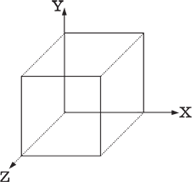
Interactive menu-driven model generation with simultaneous 3D display 2Dand 3D graphic generation using rectangular or polar coordinate systems Segments of repetitive geometry used to generate complex structural models
Model Verification

2D/3D drawings on screen as well as on plotter/printer Full 3D shapes for frames, elements Isometric or any rotations for full 3D viewing
Static Analysis
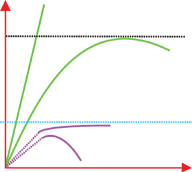
2D/3D analysis based on state-of-the-art Matrix method to handle extremely large job. Linear, p-delta analysis, non-linear analysis with automatic load and stiffness correction.
Dynamic/Seismic Analysis
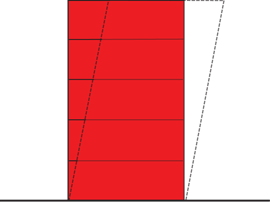
Mass modeling, extraction of frequency and mode shapes Response spectrum, time history analysis Modal damping ratio for individual models
Secondary Analysis
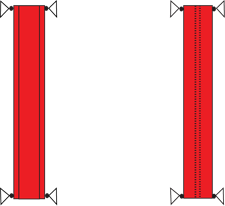
Finite element capabilities, steel design, concrete design, and timber design. Forces and displacements at sections between nodes. Maximum and minimum force envelopes.
Learning Outcome:
- You will know how to complete object-oriented intuitive 2D/3D graphic model generation.
- You will know how to use pull down menus, floating toolbars, tool tip help
- You will know how to carry out flexible zoom and multiple views
- You will know how to have isometric and perspective views and 3D shapes
- You will know how to use built-in command file editor and simple command language
- You will know how to generate graphics/text input
- You will know how to do efficient algorithm that minimizes disk space requirements
- You will know how to take presentation quality printer plots of geometry and results as part of run output
- You will know how to perform accurate and numerically efficient plate/shell element incorporating out-of-plane shear and in-plane rotation; automatic element mesh generation; comprehensive element stress output including in-plane stresses, out-of-plane shear, bending and principal stresses at nodal as well as user specified points
- You will learn how to achieve user-specified design parameters to customize design
- You will know how to perform code check, member selection and optimized member selection consisting of analysis/design cycles.
- You will know how to design concrete beams/columns/slabs/footings as per all major international codes
Pre-requisite
These are 30-hour courses. Students pursuing a diploma or degree programme in building design or architecture or civil engineering can join the courses.
Job Titles
Upon completion of the course, students can apply for the jobs of Building Designer / Architectural Designer / Structural CAD Designer / BIM Designer / Interior Designer.
Entry-level Salary
Upto Rs 3 lakh per annum (in India)
Diploma, Professional, and Master Diploma Courses
CADD Centre offers courses that represent the right combination of CAD/BIM software and concepts of building design and project management, and project management software to equip students to be job-ready and professionals to increase their productivity. Following are our higher end courses in building design:
Master Diploma in Building Design
This course is focused on the building design space and will help students capture ideas; communicate designs to various stakeholders, 3D Modeling, Building Information Modeling and Project Planning Management. This is possible by the inclusion of advanced tools.
Professional in Building Design
The professional courses provide the students complete understanding on the drafting and modeling as well as analysis tools used in building design, this course encompasses the needs of all civil engineers and architects.
Diploma in Building Design
The diploma program in building design equips the participants with the tools required to carry out tasks of visualization and presentation included in the scope of building design.
Pre-requisite
These are 40-hour courses. Students pursuing a diploma or degree programme in building design or architecture or civil engineering can join the courses. To know more download the Course Summary here.
Job Titles
Upon completion of the course, students can apply for the jobs of Building Designer / Architectural Designer / Structural CAD Designer / BIM Designer / Interior Designer
Entry-level Salary
Upto Rs 5 lakhs per annum in India

